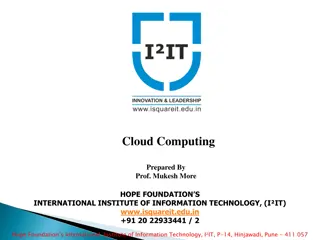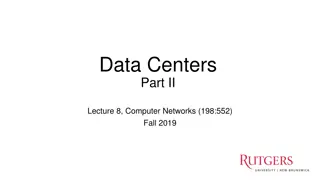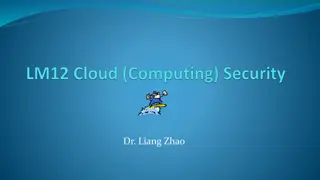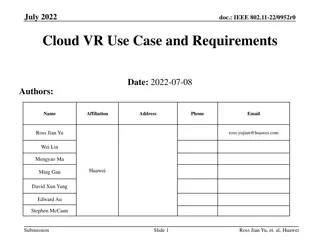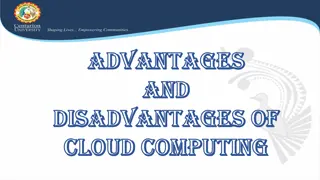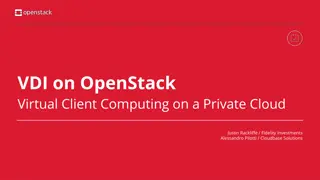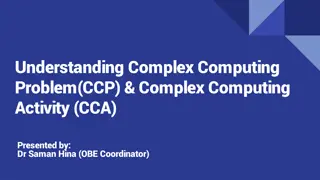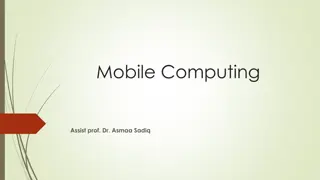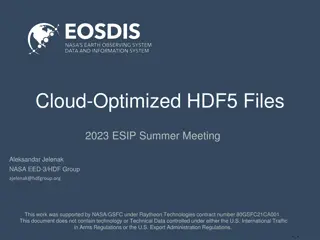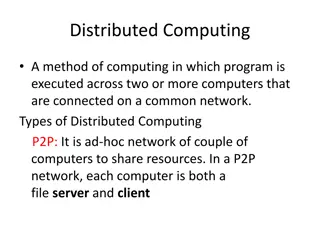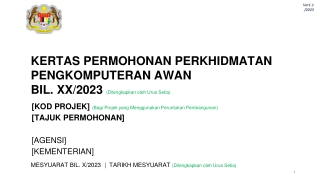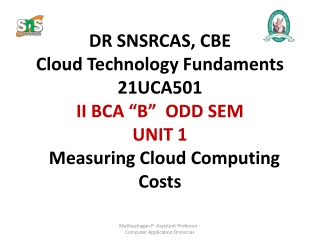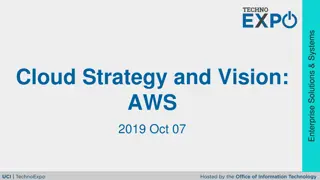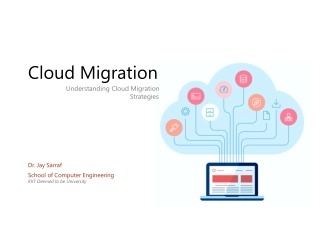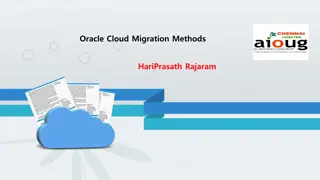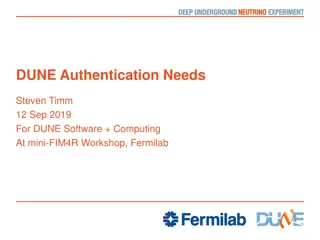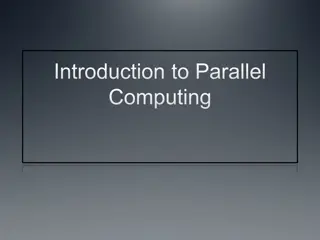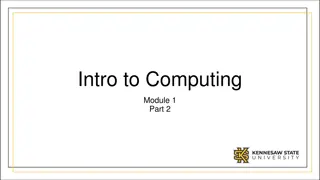Understanding Cloud Computing: Benefits and Risks
Cloud computing is revolutionizing IT delivery by offering flexible, scalable, and cost-effective services. Businesses can benefit financially and operationally from cloud adoption, but must also consider potential risks. Financial benefits include reduced costs, improved cash flow, and aligning costs with business demand. The cloud also provides responsiveness benefits, ensuring immediate access to resources and universal availability of applications and data. However, migrating to the cloud requires careful consideration of the implications and associated risks.
Download Presentation

Please find below an Image/Link to download the presentation.
The content on the website is provided AS IS for your information and personal use only. It may not be sold, licensed, or shared on other websites without obtaining consent from the author. Download presentation by click this link. If you encounter any issues during the download, it is possible that the publisher has removed the file from their server.
E N D
Presentation Transcript
Road Map Mobile Security Security Auditing & Risk Analysis WLAN Security Introduction Mobile Network Overview (optional) Evolution of Wireless Network WLAN Overview Evolution of Cloud Cellular Network Security (optional) Infor. Security Essentials WLAN Threats & Vulnerabilities Confidentiality and Integrity of Cloud Mobile Security Threats WLAN Security Cloud Threats & Vulnerabilities WLAN Security Tools Mobile Devices Security (optional) Cloud Security 2
Outline Introduction of Cloud What is Cloud Different Level The Model Can be Applied How Traditional IT Maps onto Cloud 3
Introduction of Cloud In pure business terms, cloud is essentially a flexible, scalable, pay- per-use model for the way IT services are delivered and consumed, typically through short-term contracts. With its pay-as-you go model, cloud moves many IT costs from capital expenditure to operating expenditure; its elasticmodel means available IT capability can be flexed to mirror changing business demand; and it enables consumers of IT to have much greater transparency over their costs. 4
What is Cloud? Cloud will transform the way IT is delivered. But to understand what that means to the business, the benefits and potential risks of migrating to cloud services need to be carefully considered. There are essentially two types of business benefit that result from operating in the cloud. Financial Responsiveness Cloud ensures that applications and data are available to users any time, any place, anywhere 5
Cloud Benefits Financial benefits Cloud brings benefits across a broad range of financial areas: Reduced costs Costs are lower using cloud services compared to bespoke build and maintenance systems Reduced total cost of ownership Only the capacity required is paid for, with faster resource availability, providing optimum support to the business Reduced capital expenditure IT is purchased as operational rather than capital expenditure Costs aligned to business demand Cash flow is improved by spending only when services are required. 6
Cloud Benefits Responsiveness benefits Cloud ensures the organisation is more responsive to business requirements through: Instant on Computing resources and systems are available immediately when needed by the business functions Universal access Cloud ensures applications and data are available any time, any place, anywhere Agile provisioning Cloud provides the ability to react to changing business requirements through the rapid delivery of appropriate IT operational resources. 7
Where is Cloud? There are also different types of cloud. A private cloud service can be accessed only by an organisation s employees and is usually owned and run by the organization, although it could also be internally provided by a third-party supplier or externally provided by a third-party supplier as an IT outsourcing (ITO) service. A community cloud is a private cloud for shared use by multiple organisations and can be accessed by their employees and the trusted employees of other organizations. A shared public cloud can be accessed by anyone: e.g. Amazon s Elastic Compute Cloud (EC2) or Google s App Engine 8
Different Type of Cloud It is useful to consider these cloud types as a continuum from traditional IT infrastructure through to public cloud, as highlighted in the table below. 9
Where is Cloud? These benefits of operating in the cloud should, however, be weighed up and mitigated against the associated risks. The most common issues can be summed up through Business information security Data residency and legal jurisdiction Regulatory compliance Concerns about vendor lock-in Interoperability across multiple cloud services and providers 10
Different Level The Model Can be Applied Infrastructure-as-a-Service (IaaS) Virtual machine services accessed over the network, providing compute and/or storage capabilities Platform-as-a-Service (PaaS) Platform software services (such as web, application, database servers, enterprise service buses and other middleware, with associated security mechanisms) on which web service-based applications can be built Software-as-a-Service (SaaS) Applications provided as a service from the cloud, with end-user licenses procured or released in line with changing demand Data-as-a-Service (DaaS) Data or information delivered from the cloud either as raw data sets or consumed through an analytics interface Business Process-as-a-Service (BPaaS) Cloud-delivered business services that are aligned to business processes and associated measurable business outcomes. 11
How Traditional IT Maps onto Cloud The diagram on the right shows how those cloud services relate to the traditional IT stack. But in the current frenzy of hype, that naming convention has been open to abuse: vendors will often append the as-a-service tag to any new network-based product and service, but it doesn t always follow that those will be cloud or even cloud-ready so buyer beware. This confusion is compounded by the same terms being used to define different elements of cloud. 12
Cloud Adoption in Next LM The adoption of cloud is therefore not just an IT issue; it is of concern to and impacts all parts of the business. Take for example email: to many organizations moving this to the cloud would be an unacceptably high-risk strategy because of the risk of loss or abuse of sensitive information. Critical and confidential data or information needs to be processed and held inside secure private systems; this could be held on a private cloud on customer premises or in a service provider s data centre Less critical and confidential data or applications could be held in a shared community cloud where the cloud service is shared with a controlled group of other cloud users Public domain, non-critical information that does not place the company at risk can be held outside the organisation in the public cloud. 13
Acknowledgement This course is developed in non-textbook mode. We acknowledge the idea, content, and structure from: The white book of cloud Adoption The white book of cloud Security Mobile security for the rest of us Mobile Security for Dummies https://www.sfh-tr.nhs.uk/media/4866/information-security-mobile-security-for- dummies-ebook.pdf 14






